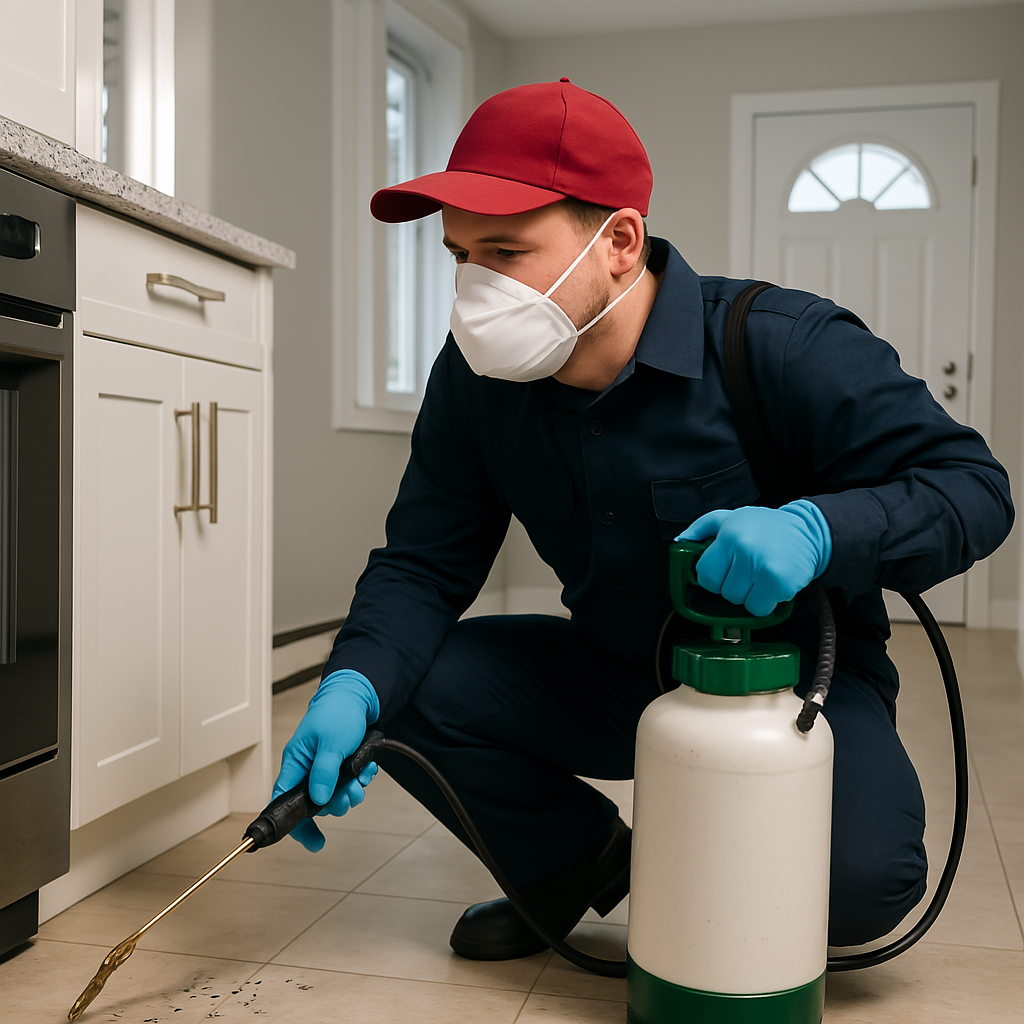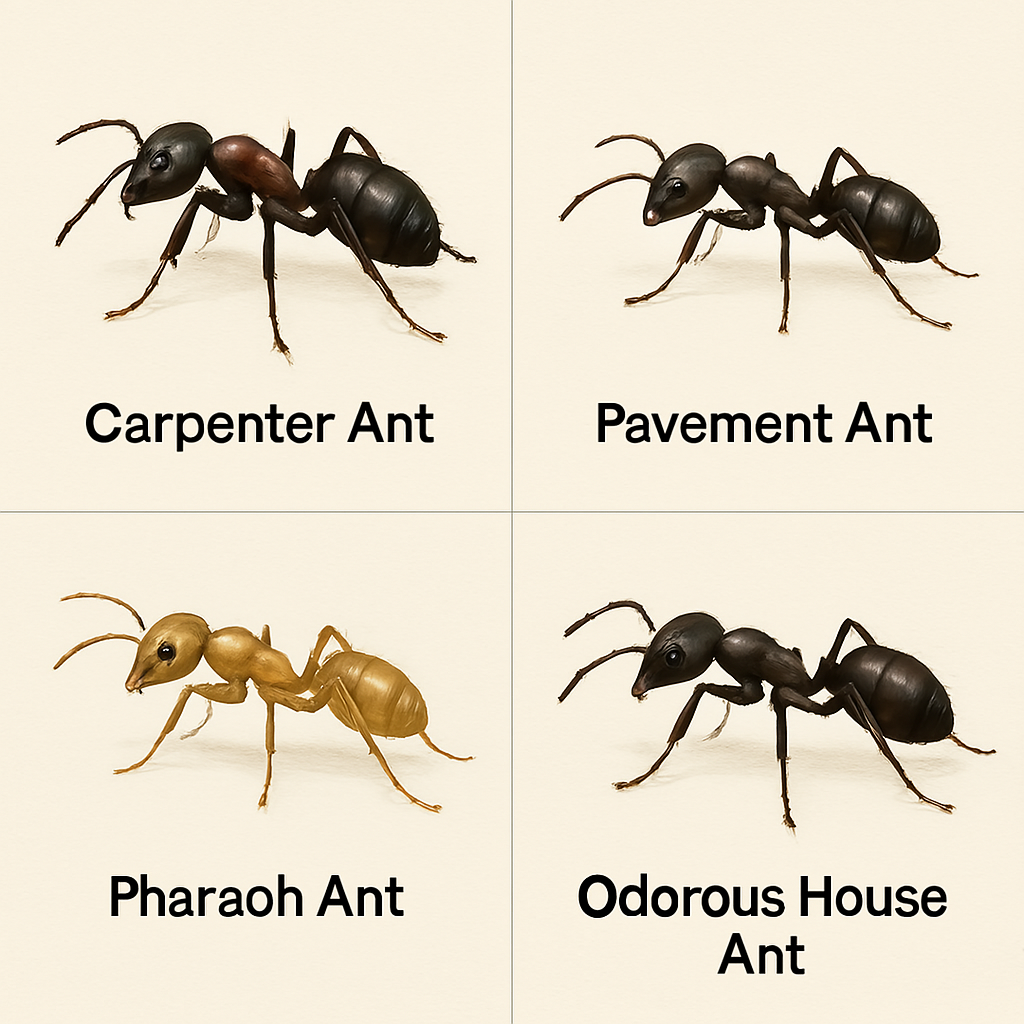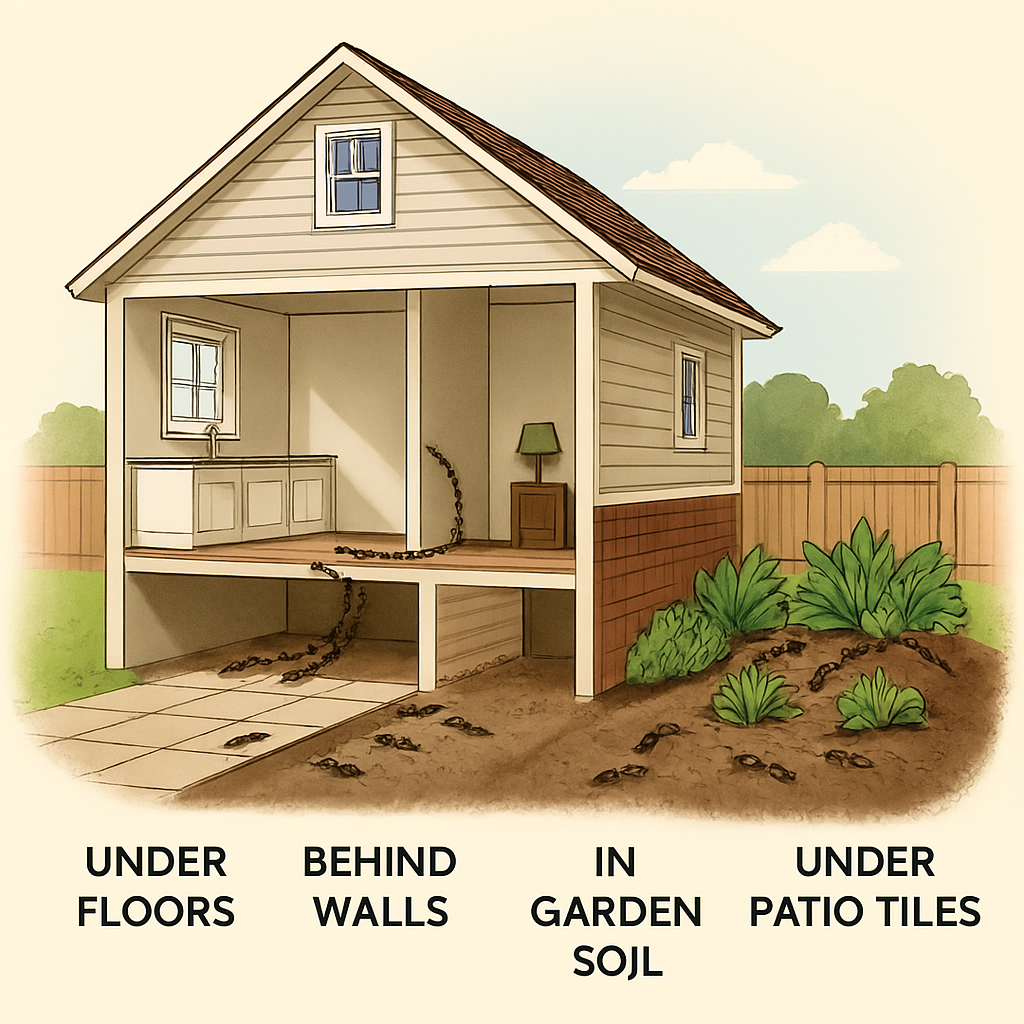1. Introduction to Ant Infestations

What Are Ant Infestations?
Ant Control Services infestations are not just annoying — they’re a full-on invasion. Imagine tiny armies marching through your kitchen, bedroom, or even your walls. These little guys show up in search of food, water, and shelter, and once they find it, they don’t leave easily.
Why Ants Invade Canadian Homes
Even with Canada’s chill, ants love to sneak indoors — especially during:
- Spring and summer
- Rainy periods
- When their colony needs warmth
They find:
- Food crumbs under appliances
- Leaky pipes as water sources
- Wood structures to nest in
Common Types of Ants in Canada

You’ll mostly see:
- Carpenter ants (the wood destroyers)
- Pavement ants (lovers of sidewalks and basements)
- Pharaoh ants (tiny and super annoying)
- Odorous house ants (smell like rotten coconut — yuck)
Fun Fact: One carpenter ant colony can have over 10,000 workers!
Health and Structural Risks of Ants
Ants can:
- Contaminate food
- Trigger allergies
- Damage wood structures
- Attract other pests like spiders and beetles
This is why early detection and quick action are key!
2. Why You Need Professional Ant Control
DIY vs Professional Services
Let’s be honest. Ant traps and sprays from the store rarely work long-term. Professionals bring:
- Advanced baits
- Precision techniques
- Training in ant behavior
Risks of Ineffective Control
- You only kill visible ants
- Queen stays safe in the nest
- Colony rebounds fast — even stronger!
Safety and Eco-Friendly Methods
Modern ant control uses:
- Non-toxic baiting
- Pet-safe sprays
- Targeted treatments that don’t harm your environment
Example: Integrated Pest Management (IPM) is a science-based eco-method used by many pros.
Cost-Effectiveness of Hiring Experts
You may spend $50 on sprays monthly. Or:
- One-time treatment: ~$200
- Long-term results
- Warranty-backed
So yes, experts = smart savings.
3. Common Types of Ants in Canada
Carpenter Ants
These are the worst kind. Why?
- Chew through wood
- Cause structural damage
- Thrive in moist areas like basements
Pavement Ants
- Found near driveways and sidewalks
- Small but tough
- Often enter homes via foundation cracks
Pharaoh Ants
- Tiny, yellow ants
- Love kitchens and hospitals
- Known to carry germs
Odorous House Ants
- Black or brownish
- Nest in walls and floors
- Release a foul smell when squished
Places They Hide
Behind kitchen walls
Under sinks
Near trash cans
Inside wooden frames
4. Signs You Have an Ant Problem

Trails and Nests
Ants leave pheromone trails — if you see lines of ants marching, that’s a big red flag. Nests may look like:
- Dirt mounds
- Sawdust piles
- Wall crevices
Wood Shavings and Damage
Carpenter ants don’t eat wood, but they carve it — you’ll spot:
- Hollow sounds in walls
- Fine sawdust near windows
- Cracks in furniture
Presence in Kitchens and Bathrooms
These rooms are ant heaven:
- Moisture + sugar = perfect combo
- They often live under sinks or near dishwashers
Nighttime Activity and Swarms
Some ants are more active at night. Turn on a light and boom — they scatter. Winged ants swarming indoors? That’s a sign of a mature colony.
5. Effective Ant Removal Methods
Baiting Systems
Professional-grade bait stations:
- Attract worker ants
- Spread poison to the queen
- Kill the colony at the root
Non-Toxic Sprays
Green sprays include:
- Citrus oil
- Peppermint oil
- Vinegar-based solutions
Perfect for:
- Homes with kids
- Pet owners
Barrier and Perimeter Treatments
Experts apply invisible barriers around:
- Door frames
- Window sills
- Foundation cracks
This keeps future ants out.
Nest Elimination
Best services:
- Find the main nest
- Inject it with targeted treatments
- Ensure complete destruction
Pro Tip: Killing just visible ants = short-term success. Nest removal = long-term peace.
6. How to Choose the Best Ant Control Service
Local Reviews and Ratings
Start by checking:
- Google Reviews
- Yelp or HomeStars
- Facebook business pages
Look for:
- 4+ star ratings
- Real before-and-after photos
- Comments about speed and friendliness
💬 Customer quote: “They came the same day and found the nest in 10 minutes!”
Licensed and Insured Professionals
Don’t hire just anyone. Make sure the company is:
- Certified in pest control
- Insured for damages
- Following Canadian safety standards
Ask for their license number. A real pro won’t hesitate to share it.
Response Time and Guarantees
Fast action is critical. Check if they offer:
- Same-day service
- Emergency 24/7 support
- Satisfaction guarantees (some offer 6-month coverage)
Pro Tip: Read the fine print on follow-ups and warranties.
Custom Treatment Plans
Every home is different. Good companies:
- Inspect your space first
- Identify ant species
- Create a tailored plan (not one-size-fits-all)
7. Preventing Future Ant Infestations
Home Sealing and Repairs
Ants sneak in through:
- Window gaps
- Foundation cracks
- Torn screens
Seal up your home like Fort Knox. Use:
- Silicone caulk
- Weatherstripping
- Door sweeps
Proper Food Storage
Ants love:
- Sugar
- Bread crumbs
- Pet food
Use airtight containers. Clean counters every night.
htmlCopyEdit<ul>
<li>Store food in glass jars</li>
<li>Clean spills right away</li>
<li>Empty trash daily</li>
<li>Rinse recyclables</li>
</ul>
Regular Inspections
Don’t wait until it’s bad. Inspect:
- Under sinks
- Basement corners
- Attics and crawlspaces
Catch nests early and call for help ASAP.
Landscaping Tips
Outdoor ant colonies often invade from:
- Mulch beds
- Tree stumps
- Lawn edges
Keep bushes trimmed and woodpiles far from your home.
8. Cost of Ant Control Services in Canada
Factors That Affect Pricing
Prices depend on:
- Type of ants
- Home size
- Severity of infestation
- Service provider location
Average Service Costs
Here’s a rough idea:
Basic treatment (1 visit): $150–$300
Full removal with guarantee: $300–$600
Emergency same-day: $400+
Quarterly plans: $100–$200 per visit
One-Time vs Ongoing Treatments
- One-time: Quick fix but may need repeats
- Ongoing: Covers all seasons, offers better prevention
Choose based on your budget and location.
Warranty and Follow-Up Costs
Many services include:
- Free second visit (within 30 days)
- 6–12 month ant-free guarantee
- Minor repairs (like sealing entry points)
Always ask for a detailed quote upfront.
9. Top Ant Control Services in Canada
National vs Local Providers
Big brands (Orkin, Terminix):
- Known reputation
- Structured pricing
- Wide coverage
Local pros:
- Personalized care
- Flexible pricing
- Better knowledge of regional pests
Top-Rated Pest Control Companies
Some of Canada’s best include:
- Orkin Canada
- Pestend Pest Control
- GreenLeaf Pest Control
- Abell Pest Control
- Pesticon Pest Control
Coverage in Toronto, Vancouver, Calgary, Ottawa, and more.
Customer Testimonials
“They found the hidden nest in my attic and were super clean.”
“Love that they use pet-safe sprays.”
“Fast, friendly, and affordable.”
Regional Differences in Services
- Ontario has more carpenter ants
- West Coast deals with moisture-loving ants
- Alberta and Saskatchewan get summer swarms
Local knowledge = faster control.
10. Conclusion & Final Thoughts
Ants are persistent. But you’re smarter.
We covered:
- How to spot an infestation
- Why professional help matters
- Smart ways to prevent re-entry
- The best services near you
Now it’s your turn. Don’t wait for ants to take over your home. Call the experts and enjoy peace of mind (and ant-free snacks).
Stay safe, Canada
FAQs – Ant Control in Canada
1. What’s the most common ant in Canadian homes?
Carpenter ants are the most common and also the most destructive, especially in damp wood.
2. Are ant control sprays safe for pets and kids?
Yes! Most pros use eco-friendly, non-toxic sprays designed to be safe for children and animals.
3. How long does it take to get rid of ants?
It can take 1–2 weeks after treatment for the entire colony to die off, depending on the method used.
4. Can ants come back after treatment?
If prevention methods aren’t in place, yes. That’s why sealing and ongoing maintenance are important.
5. What’s the best time to get ant control services?
Spring and early summer — that’s when ants start foraging and building colonies indoors.
